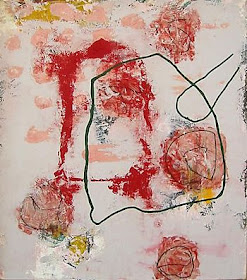In Memory
July 5, 2011
Cy Twombly

b. 1928, Lexington, Va. d. 2011 Rome, Italy
Edwin Parker "Cy" Twombly was born in 1928, in Lexington, Virginia. From 1948 to 1951, he studied at the School of the Museum of Fine Arts, Boston; Washington and Lee University, Lexington; and the Art Students League, New York, where he met Robert Rauschenberg. At Rauschenberg’s encouragement, he attended Black Mountain College, near Asheville, North Carolina, in 1951 and 1952, where he studied under Franz Kline, Robert Motherwell, and Ben Shahn.

The Kootz Gallery, New York, organized his first solo exhibition in 1951. At this time, his work was influenced by Kline’s black-and-white gestural Expressionism, as well as by Paul Klee’s childlike imagery. In 1952, Twombly received a grant from the Virginia Museum of Fine Arts that enabled him to travel to North Africa, Spain, Italy, and France. Upon his return in 1953, he served in the army as a cryptologist. From 1955 to 1959, he worked in New York and Italy, finally settling in Rome. It was during this period that he began to create his first abstract sculptures, which, although varied in shape and material, were always coated with white paint. In Italy, he began to work on a larger scale and distanced himself from his former Expressionist scribbles, moving toward a more literal use of text and numbers, drawing inspiration from poetry, mythology, and classical history. He subsequently created a vocabulary of various signs and marks, sometimes sexually charged, that read on a metaphorical level rather than according to any form of traditional iconography.

Cy personified the "investigative scribble" + "poetic word" on the canvas.
When he broke into the gallery scene in the early 50's he changed the way abstraction was perceived.
-Eye-likey


circa 50's







In the late 60’s Twombly made this work using an unusual technique: he sat on the shoulders of a friend, who shuttled back and forth along the length of the canvas, thus allowing the artist to create his fluid, continuous lines.




His father, who played baseball for the Chicago White Sox, got the nickname “Cy” after the famous baseball player Cy Young. The nickname eventually passed to Twombly Jr. too.




We also know Jean-Michel Basquiat kept a book of Twombly works open next to his canvas while painting. Basquiat cites Twombly as a major influence to his work. See
the past OCT feature for Basquiat's work.




cy with his works
nyc 1950's



















Mr. Twombly died last week in Rome at the age of 83.











































































